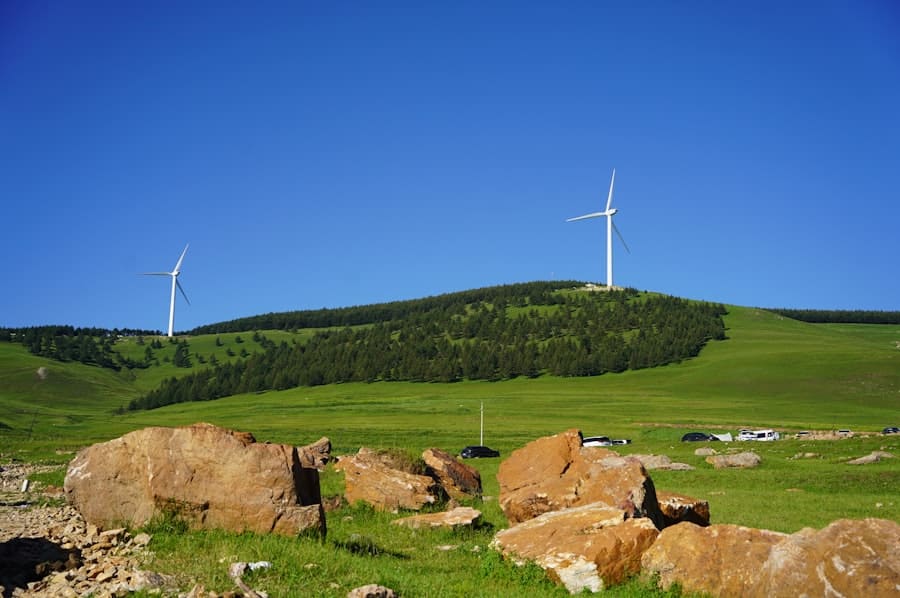Sustainable energy systems are designed to harness renewable resources in a manner that minimizes environmental impact while meeting the energy demands of homes, businesses, and communities. These systems rely on energy sources that are naturally replenished, such as solar, wind, hydro, and geothermal energy. The primary goal of sustainable energy systems is to reduce reliance on fossil fuels, which contribute significantly to greenhouse gas emissions and climate change.
By transitioning to sustainable energy, we can create a more resilient energy infrastructure that supports both current and future generations. The concept of sustainability in energy systems extends beyond just the sources of energy; it encompasses the entire lifecycle of energy production, distribution, and consumption. This includes the materials used in energy technologies, the efficiency of energy use, and the social and economic implications of energy choices.
For instance, sustainable energy systems often prioritize local resources and technologies, which can stimulate local economies and create jobs. Furthermore, they promote energy efficiency measures that reduce overall consumption, thereby lessening the strain on both the environment and the economy.
Key Takeaways
- Sustainable energy systems aim to reduce environmental impact and promote long-term energy security.
- Assessing your home’s energy needs is crucial for determining the right sustainable energy sources.
- Choosing the right sustainable energy sources depends on factors such as location, climate, and available resources.
- Installing solar panels can significantly reduce reliance on traditional energy sources and lower utility bills.
- Implementing wind turbines can provide a reliable source of renewable energy, especially in areas with consistent wind patterns.
Assessing Your Home’s Energy Needs
Before embarking on the journey toward a sustainable energy system, it is crucial to assess your home’s specific energy needs. This assessment involves understanding your current energy consumption patterns, identifying peak usage times, and evaluating the efficiency of your existing appliances and systems. A comprehensive energy audit can provide valuable insights into where energy is being used most and where improvements can be made.
This process often includes examining insulation levels, window efficiency, heating and cooling systems, and even the types of lighting used throughout the home. Once you have a clear picture of your energy consumption, you can begin to identify areas for improvement. For example, if your home relies heavily on electric heating during winter months, you may want to consider alternative heating solutions that are more sustainable.
This tailored approach ensures that you invest in solutions that not only meet your current needs but also accommodate future growth or changes in lifestyle.
Choosing the Right Sustainable Energy Sources

Selecting the appropriate sustainable energy sources for your home is a critical step in creating an effective energy system. The choice largely depends on geographical location, climate conditions, and personal preferences. Solar energy is one of the most popular options due to its versatility and decreasing costs.
Homes in sunny regions can benefit significantly from solar panels, which convert sunlight into electricity. However, solar may not be as effective in areas with frequent cloud cover or heavy snowfall. Wind energy is another viable option, particularly in regions with consistent wind patterns.
Small-scale wind turbines can be installed on residential properties to generate electricity. However, zoning regulations and local ordinances may affect the feasibility of wind installations. Geothermal systems offer a different approach by utilizing the earth’s stable underground temperatures for heating and cooling purposes.
This method is particularly effective in areas with significant geothermal activity but can also be adapted for use in other regions with proper design considerations.
Installing Solar Panels
The installation of solar panels is a significant step toward achieving a sustainable energy system. The process begins with selecting the right type of solar panel technology—monocrystalline, polycrystalline, or thin-film—each with its own advantages and disadvantages. Monocrystalline panels are known for their high efficiency and space-saving design but tend to be more expensive.
Polycrystalline panels are generally less efficient but offer a more budget-friendly option. Thin-film panels are lightweight and flexible but may require more space to generate the same amount of power as their crystalline counterparts. Once you have chosen the appropriate technology, the installation process involves several key steps.
First, a professional installer will assess your roof’s orientation, angle, and shading to determine the optimal placement for maximum sunlight exposure. After securing necessary permits and approvals from local authorities, the installation team will mount the panels on your roof or property and connect them to your electrical system. It is essential to ensure that the installation complies with local building codes and safety regulations to avoid potential issues down the line.
Implementing Wind Turbines
Incorporating wind turbines into your sustainable energy system can provide an additional source of renewable electricity. The first step in this process is to evaluate your property for wind potential. This involves measuring wind speeds over time to determine if they are sufficient for generating power.
Generally, a minimum average wind speed of 9 miles per hour is recommended for effective turbine operation. If your location meets this criterion, you can proceed with selecting an appropriate turbine size based on your energy needs. The installation of wind turbines requires careful consideration of local zoning laws and regulations.
Many areas have specific guidelines regarding turbine height, placement, and noise levels to minimize impact on neighbors and wildlife. Once these factors are addressed, the installation process typically involves erecting a tower to support the turbine at an optimal height for capturing wind energy. Proper maintenance is also crucial; regular inspections ensure that the turbine operates efficiently and safely over its lifespan.
Utilizing Geothermal Heating and Cooling Systems

Geothermal heating and cooling systems leverage the earth’s stable temperatures to provide efficient climate control for homes. These systems consist of a series of underground pipes filled with a heat-transfer fluid that absorbs or dissipates heat depending on the season. In winter, the system extracts heat from the ground to warm your home; in summer, it reverses the process to cool it down.
This method is highly efficient because it requires significantly less energy than traditional heating and cooling systems. The installation of geothermal systems involves drilling boreholes or trenching to lay down the ground loops. The depth and configuration of these loops depend on factors such as soil type, climate conditions, and available land area.
While the initial investment for geothermal systems can be higher than conventional HVAC systems, they often result in substantial long-term savings on energy bills due to their efficiency. Additionally, many regions offer incentives or rebates for homeowners who choose geothermal solutions, further offsetting installation costs.
Integrating Energy Storage Solutions
Energy storage solutions play a vital role in enhancing the effectiveness of sustainable energy systems by allowing homeowners to store excess energy generated from renewable sources for later use. Battery storage systems are among the most common options available today. These systems can store electricity produced by solar panels or wind turbines during peak production times for use during periods of low generation or high demand.
When selecting an energy storage solution, it is essential to consider factors such as capacity, discharge rate, and lifespan. Lithium-ion batteries are popular due to their high energy density and efficiency; however, they can be expensive upfront. Other options include lead-acid batteries or newer technologies like flow batteries that offer different advantages depending on specific needs and budgets.
Integrating an energy storage system not only enhances self-sufficiency but also provides backup power during outages, contributing to overall resilience.
Monitoring and Maintaining Your Sustainable Energy System
Once your sustainable energy system is up and running, ongoing monitoring and maintenance are crucial for ensuring optimal performance over time. Many modern systems come equipped with monitoring software that allows homeowners to track energy production and consumption in real-time. This data can help identify trends or anomalies that may indicate issues requiring attention.
Regular maintenance tasks vary depending on the type of system installed but generally include cleaning solar panels to remove dust or debris that could hinder performance, inspecting wind turbine components for wear or damage, and checking geothermal loop systems for leaks or blockages. Establishing a routine maintenance schedule not only prolongs the lifespan of your equipment but also maximizes efficiency and minimizes unexpected repair costs. By understanding sustainable energy systems comprehensively—from assessing your home’s needs to implementing various technologies—you can make informed decisions that contribute positively to both your household budget and the environment.
Each step taken toward sustainability not only enhances personal resilience but also plays a part in addressing broader global challenges related to climate change and resource depletion.
In the quest to create a more sustainable future, many homeowners are turning to renewable energy solutions to power their homes. A great resource to complement the “Step-by-Step Tutorial on Sustainable Energy Systems at Home” is an article on the latest advancements in technology that can enhance your sustainable living experience. For instance, integrating smart technology into your home can significantly improve energy efficiency. To explore the latest in smart technology, you might find the article on The Top 5 Smartwatches of 2023 particularly insightful. While it focuses on smartwatches, the underlying technology and connectivity features discussed can be applied to smart home systems, offering innovative ways to monitor and manage energy consumption effectively.
FAQs
What are sustainable energy systems at home?
Sustainable energy systems at home are systems that utilize renewable energy sources such as solar, wind, or hydro power to generate electricity and heat for residential use. These systems are designed to reduce reliance on non-renewable energy sources and minimize the environmental impact of energy consumption.
What are the benefits of sustainable energy systems at home?
The benefits of sustainable energy systems at home include reduced energy costs, decreased reliance on non-renewable energy sources, lower carbon emissions, and increased energy independence. These systems also contribute to a more sustainable and environmentally friendly lifestyle.
How can I implement sustainable energy systems at home?
To implement sustainable energy systems at home, you can start by conducting an energy audit to assess your current energy usage and identify areas for improvement. Then, you can consider installing solar panels, wind turbines, or hydroelectric systems to generate renewable energy. Additionally, you can invest in energy-efficient appliances and insulation to further reduce energy consumption.
Are there any government incentives for implementing sustainable energy systems at home?
Many governments offer incentives, rebates, and tax credits to encourage the implementation of sustainable energy systems at home. These incentives can help offset the initial costs of installing renewable energy systems and make them more affordable for homeowners.
What are some common challenges associated with sustainable energy systems at home?
Some common challenges associated with sustainable energy systems at home include high initial costs, variability of renewable energy sources, and the need for proper maintenance and monitoring. Additionally, homeowners may face regulatory and zoning restrictions when installing renewable energy systems.

